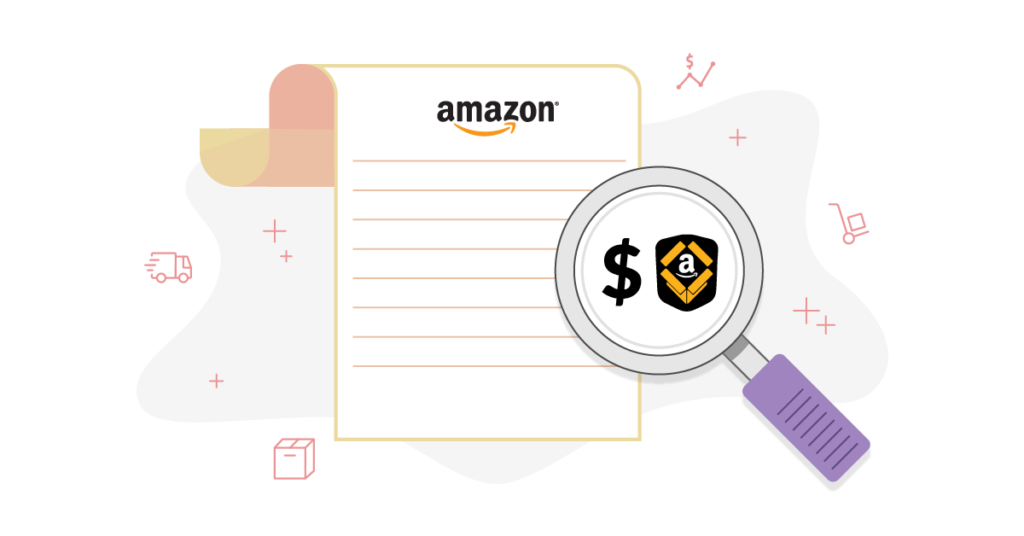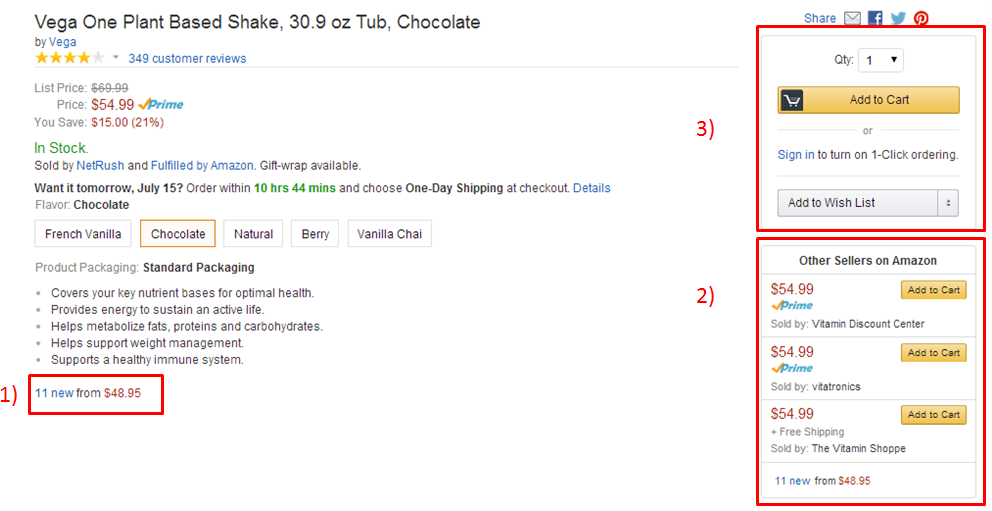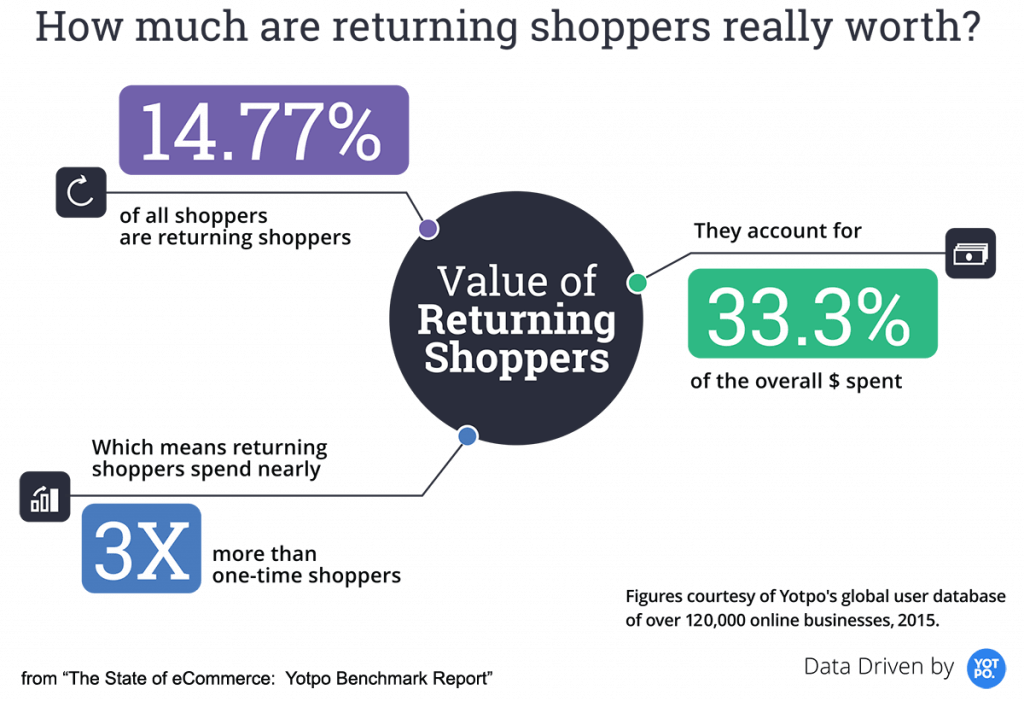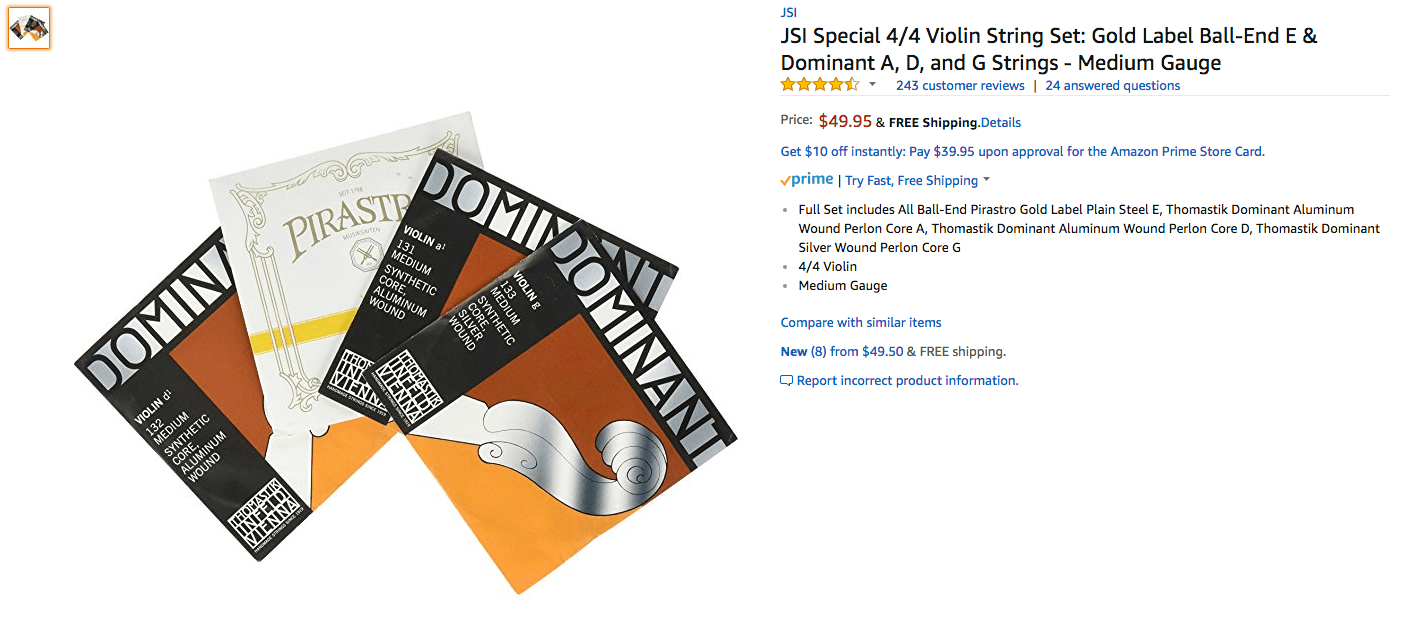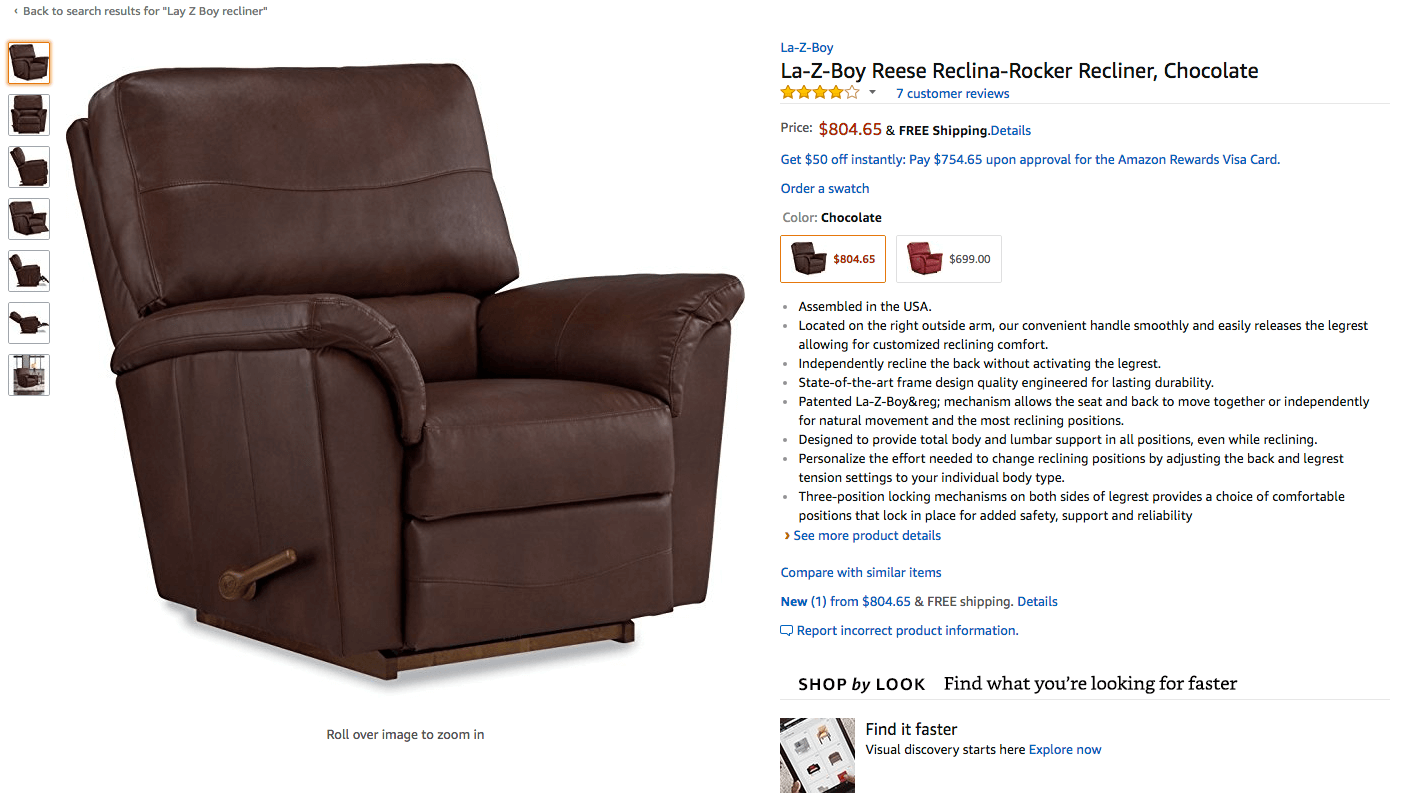If you’re an Amazon seller, it’s likely you’ve considered using Fulfilled By Amazon (FBA). But does it deliver better ROI, will it drive up your costs, and is it a fit for your business? This guide should clear the question up.
To start out, let’s look at what Amazon’s fees for FBA actually are and how their fee schedule is set up.
How does Amazon’s fee schedule work?
There are three kinds of fees charged by Amazon. These are:
- Fulfillment fees: the cost to pick up, pack and ship your item.
- Seller fees. You’ll either pay per-item fees or go pro and pay a monthly charge.
- Storage fees: the cost to store items in Amazon’s warehouses when you use their FBA program.
To understand how these fees work, we need to look at them in a little more detail.
Fulfillment fees
Amazon’s fulfillment fees are a flat cost that depend on the size and weight of the item:
| Standard size | Oversize | ||||||||||||||||
|
|
Seller fees
The seller fees you’ll pay on Amazon depend partly on whether you have a personal or professional Amazon account. The crucial difference is this: personal sellers pay a per-item selling fee of 99¢, and professional sellers don’t. Pro sellers pay a $39.99 monthly membership fee, personal sellers don’t.
So if you’re planning on selling 40 or more items on Amazon, going pro saves you money.
In addition to those seller fees, there’s a referral fee and variable closing fees.
Referral fees are a percentage of the item price. What percentage depends on the item category, and some categories have a set per-item minimum fee. In those cases, you’ll pay either the minimum fee or the percentage referral fee, whichever is higher.
Amazon’s referral fees look like this:
| Categories | Amazon takes the minimum item referral fee or the percentage referral fee – whichever is greater. | |
| Referral fee percentage | Minimum referral fee | |
| Amazon Device Accessories | 45% | $1.00 |
| Baby Products (excluding Baby Apparel) | 15% | $1.00 |
| Books | 15% | No minimum |
| Camera and Photo¹ | 8% | $1.00 |
| Cell Phone Devices* | 8% | $1.00 |
| Consumer Electronics | 8% | $1.00 |
| DVD4 | 15% | No minimum |
| Electronics Accessories | 15% for sales price up to $100; 8% for sales price over $100 | $1.00 |
| Furniture & Decor | 15% | $1.00 |
| Home & Garden (including Pet Supplies) | 15% | $1.00 |
| Kitchen | 15% | $1.00 |
| Major Appliances | 15% for sales price up to $300; 8% for sales price over $300 | $1.00 |
| Music | 15% | No minimum |
| Musical Instruments | 15% | $1.00 |
| Office Products | 15% | $1.00 |
| Outdoors | 15% | $1.00 |
| Personal Computers | 6% | $1.00 |
| Software & Computer/Video Games4 | 15% | No minimum |
| Sports (excluding Sports Collectibles) | 15% | $1.00 |
| Tools & Home Improvement | 15% (12% for base equipment power tools) | $1.00 |
| Toys & Games² | 15% | $1.00 |
| Unlocked Cell Phones | 8% | $1.00 |
| Video & DVD4 | 15% | No minimum |
| Video Game Consoles | 8% | No minimum |
| Everything Else³ | 15% | No minimum |
| Categories Requiring Approval | Referral Fee Percentages | Applicable Minimum Referral Fee |
| 3D Printed Products | 12% | No minimum |
| Automotive & Powersports | 12% (10% for tires and wheels products) | $1.00 |
| Beauty | 15% | $1.00 |
| Clothing & Accessories | 15% | $1.00 |
| Collectible Books | 15% | No minimum |
| Collectible Coins | Special fees apply | |
| Entertainment Collectibles | Special fees apply | |
| Fine Art | Special fees apply | |
| Gift Cards | 20% | No minimum |
| Grocery & Gourmet Food** | 15% | No minimum |
| Health & Personal Care (including Personal Care Appliances) | 15% | $1.00 |
| Industrial & Scientific (including Food Service and Janitorial & Sanitation) | 12% | $1.00 |
| Jewelry | 20% | $2.00 |
| Luggage & Travel Accessories | 15% | $1.00 |
| Shoes, Handbags & Sunglasses | 15% | $1.00 |
| Sports Collectibles | Special fees apply | |
| Watches | 16% for sales price up to $1,500; 3% for sales price over $1,500 | $2.00 |
TL;DR: You’re probably going to pay 15% or $1, whichever is higher, plus the storage fees listed below.
Storage fees
Amazon charges storage fees for items in long-term storage. Every six months, on February 15 and August 15, Amazon reassesses inventory. Anything that’s been in an Amazon fulfillment center for more than six months gets reassessed as long-term storage:
| Inventory cleanup dates | Affected inventory | Long-term storage fee (per cubic foot) |
| February 15 and August 15 | Items in fulfillment centers 181 to 365 days (6 months to 1 year) | $11.25 |
| February 15 and August 15 | Items in fulfillment centers 365 days or more (1 year or over) | $22.50 |
You’ll also pay monthly inventory storage fees, which changed in April this year, adding 5¢ per cubic foot to each fee category.
| Storage month | Standard size | Oversize |
| January – September | $0.69 per cubic foot | $0.48 per cubic foot |
| October – December | $2.40 per cubic foot | $1.20 per cubic foot |
As you can see, Amazon’s fee schedule means that smaller, faster-moving items make a lot more financial sense. We’ll get into that in detail below.
First, though:
Benefits of FBA selling on Amazon
Amazon takes a significant cut of the initial purchase price. What do you get in return?
Briefly:
- Faster fulfillment and shipping
- Fewer business operations
- Marketing advantages
- Lower costs (sometimes)
Faster fulfillment and shipping
It’s not always possible to offer same-day delivery on your products if you handle fulfillment yourself.
Amazon can provide that for you, though – and speed of delivery makes a big difference to sales:
You also get to walk away from all the headaches of fulfillment. No warehousing, delivery, packaging – Amazon handles it all. Your business is simplified.
Amazon also handles customer service. Queries and complaints become Amazon’s problem, not yours. Amazon handles them 24/7 and they rate their own customer service highly.
Marketing advantages
Being an FBA seller delivers some marketing advantages. It makes you eligible for Super Saver Shipping, Amazon Prime and Amazon’s Buy Box, all of which means you’ll likely see a much higher conversion rate.
Getting into the Buy Box is a major coup for anyone who sells on Amazon. Because Amazon displays product information, not vendor information, the vast majority of sales go to the top vendors via either the yellow buy button or the offers from other vendors:
It’s far from certain: ‘There isn’t one magic element,’ advises BigCommerce’s Eyal Lanxner, ‘but a whole host of factors that go into deciding who wins.’
Major factors that influence who gets into the Buy Box include:
- Seller account. You need a pro seller account to appear in the Buy Box
- Buy Box eligibility status. You can check this in Amazon Seller Central
- New items. Your items need to be new, not used – though there is a separate Buy Box for used items only
- Amazon rotates to the next vendor if you don’t have any of the items in stock
- Amazon gives Buy Box priority to vendors offering excellent customer service and fast delivery
Being an FBA seller doesn’t guarantee you a shot at the Buy Box. But it takes care of reputation, making sure your customer service and delivery is the equal of Amazon’s own – because they’re doing it.
Lower costs (sometimes)
For some sellers, selling some items, FBA represents a significant financial saving over handling their own fulfillment. A higher conversion rate doesn’t necessarily help your business if the same thing that delivers it, also erodes your profit margins unacceptably. How effective FBA will be for you depends on what you sell and how you sell it.
Building a customer base fast
FBA means you’re more likely to make the sale. Is that even worth it if you make hardly any profit on the initial sale? I don’t know – ask Amazon. That’s literally their whole business model.
Building a customer base that you can then market to repeatedly after an initial sale is one of the most important planks in a successful ecommerce business strategy, and it can work out profitable in the long run even if you have to accept pennies on the dollar profits on your initial sales.
Once you’ve landed those sales, how your product appears to your customers when it arrives and how you communicate with them afterwards can determine whether or not they become a long-haul profitable customer.
The acquisition of repeat customers is the making of an ecommerce business: smile.io says about 40% of an average ecommerce business’ revenue comes from repeat buyers, and Shopify says they’re worth about three times as much as one-time buyers:
Again, this comes back to what you sell – large items that are big-ticket purchases for your customers might not be a good fit for this business approach. But if you’re starting out in ecommerce, it’s good to bear in mind that a less valuable purchase, can match you up with a more valuable customer.
What you sell and how determines if FBA is a net win
Some sellers will see FBA as a clear financial win, even if they get no other advantages. Others will see it eat into profits.
Smaller, lighter items are a better fit
Selling lighter products that sell fast will cut your shipping and storage fees. Larger items cost more to ship, require more monthly storage fees – and will incur far higher fees if they roll over the 6-month cutoff and incur long-term storage fees.
Saturated market decreases FBA advantage
There was a time when being an FBA seller brought significant advantages over other sellers who fulfilled their own orders. If everyone’s an FBA seller, though, that competitive advantage disappears; being an FBA seller becomes table stakes and doesn’t confer an advantage. Some Amazon sellers argue that this has already happened.
Amazon seller ‘fp’ says they’ve seen sales eroded since they started using Amazon in 2012, arguing:
Returns policy: Amazon doesn’t negotiate
Amazon’s returns policy is pretty open-handed. It’s easier to say the customer is always right when you can well afford to swallow the loss of multiple items at the same time, so their returns policy is no-quibble.
But you might prefer to quibble, especially if you ship a small number of high-value items and eating the fees to return one makes a big dent in your profits. Amazon staff won’t do that for you.
Amazon seller ‘FunkyMonkey’:
Costs rocket if you’re caught with inventory at 180+ days
Costs shoot up if you stray into long-term storage fees territory. To combat that, it makes sense to pick items that already sell fast, and it leaves you facing a balancing act between ensuring inventory and making sure it doesn’t age into the higher fees.
There are things you can do to manage this risk. One is to strategically manage timing of inventory delivery to Amazon.
‘For example,’ says Ryan Grant of Online Selling Experiment, when the twice-yearly inventory cleanup date rolls around, ‘you will not be charged for items that have been in stock for 5 months and 29 days. So if you have items hit the warehouse on say August 20th, you have nearly a full year before you will be charged LTS fees. This is as opposed to having an item hit the warehouse on August 14th, then you will only have 6 months and a day before a LTS [Long term Storage] fee will be charged.’
Shipping to FBA Fulfillment Centers
Even if you use FBA, you still have to ship your items to an FBA fulfillment center. You have some options:
| Send Inventory to Amazon | The shipment creation workflow is ideal for small orders where you can select products you sell on Amazon and convert them to be fulfilled by Amazon, or you select products that you want to replenish. |
| Shipping Plan File Upload Tool | For medium to large shipments. You upload a .csv file of your inventory created from a template we provide. The shipment is created automatically for you. |
| Scan & Ship | For medium to large shipments. This method enables you to scan each Unit with a USB barcode scanner and print labels one at a time as you pack each box. Provides a more accurate way of labeling your inventory. |
| Amazon Marketplace Web Service (MWS) | For medium to large shipments. You can integrate your own inventory systems using Amazon APIs. |
Larger-scale businesses that sell high unit numbers of small units that are cheap to ship will benefit most from this arrangement. If you have to have a large item delivered to an FBA center and then pay Amazon’s fees to have that item fulfilled and delivered to the purchaser, you might be better off handling fulfillment yourself.
What about dropshipping?
Amazon dropshippers have to sell via FBA. Amazon doesn’t allow FBM (fulfilled by merchant) dropshipping on the platform.
If you don’t produce goods yourself, it should be possible to make significant savings by dropshipping via FBA. Play your cards right and you could get the benefits of one of the lowest-cost, highest-return business models out there.
You won’t have to transport any items to FBA fulfillment centers, so those costs can be ignored. Instead, the manufacturer or wholesaler handles transport to the FBA fulfillment center and Amazon handles the rest.
It’s important to remember that you have to follow some rules when you dropship on Amazon.
You must:
- Identify yourself as the seller on all the slips and paperwork delivered with your products
- Be responsible for accepting and processing returns
- Make sure you comply with the requirements of your FBA user agreement
You’re not allowed to:
- Buy products from another online retailer and have that retailer deliver products directly to the final purchaser
- Ship orders with packing slips, receipts or other documentation that identifies someone else as the seller
What does selling items via FBA look like?
Let’s look at a couple of examples:
Selling a lighter item
Suppose you’re selling something like these violin strings:
The buyer pays $49.99. Amazon then deducts fulfillment fees, seller fees and item storage fees, which looks like this:
| Initial purchase price | $49.99 |
| Fulfillment fees | Standard small: -$2.41 |
| Seller (professional seller) | Musical Instruments (15%): -$7.49 |
| Storage fee | -1¢ |
| Seller gets: | $40.09 |
The storage fee actually comes out as less than a cent on an item this small (5 x 4 x 0.2 inches).
In all, this seller is paying just under 20% to Amazon to make their FBA sales.
What about a different kind of sale?
What about a Lay Z Boy, though?
Say, this Lay Z Boy recliner in chocolate leather:
This sale works out very differently from our violin strings. The buyer will pay $804.65, out of which Amazon will deduct fulfillment fees, seller fees and item storage fees, as before.
This time, the result looks like this:
| Initial purchase price | $804.65 |
| Fulfillment fees | Medium oversize: -$37.18 |
| Seller (professional seller) | Furniture 15%: -$120.60 |
| Storage fee (monthly) | -$12.95 |
| Seller gets: | $633.92 |
Here, the seller is paying around 22%, with the difference mostly made up of the storage fee and increased fees because the item is oversize. Obviously, if this item had remained in inventory for over six months it would incur significant long-term storage fees.
Find out whether you stand to benefit from FBA
Amazon has a profitability calculator that lets you find out whether FBA makes financial sense for your business, compared with FBM.
Check it out here.
Conclusion
Using FBA to sell on Amazon has really significant advantages. If you dropship, or if initial transportation costs to fulfillment centers are low, FBA can deliver significant increases in revenue and ROI as well as sales.
On the flipside, larger items, slower sales and higher initial transport costs erode these advantages significantly. Whether FBA makes financial sense or not depends to a large extent on having a business geared to take advantage of its strengths.
There’s also the issue of competition. If you’re selling a product in a hotly-contested vertical or where many other retailers are selling something very similar, then a lot of the advantages of FBA cease to be so effective. That might mean FBA has become table stakes for you and you have to do it just to have an even playing field with your competitors. But it might mean other forms of fulfillment offer you better opportunities.
Finally, if you’re coming to Amazon selling cold, without an already-established business, FBA will almost always turn out to be a better choice – especially for dropshippers. If you have an established business, you should look carefully at the total cost of fulfillment, including initial transport to fulfillment centers. Remember to factor in the potential Amazon search advantages, but remember also that FBA can wind up very expensive for larger items that sell more slowly. If you’re looking for a fulfillment solution for your existing business, weigh FBA very carefully!
